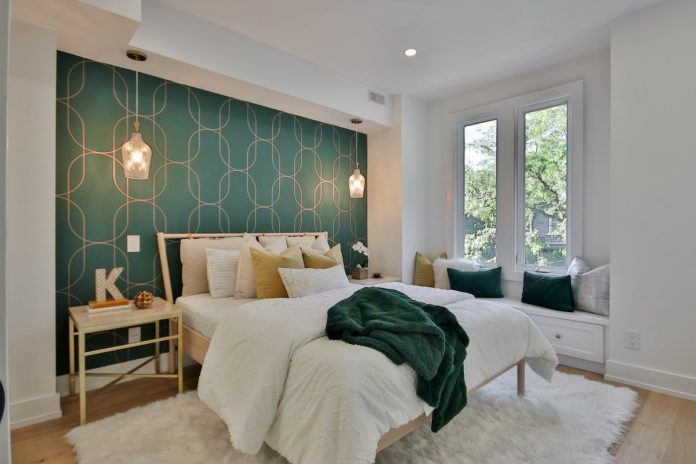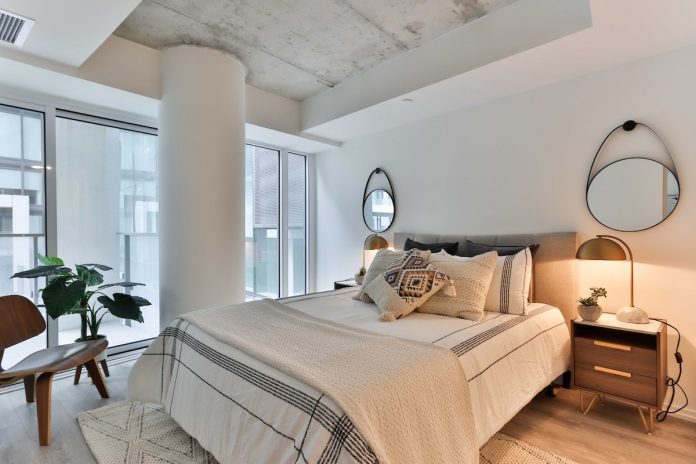6 Smart Tips On Designing Your Master Bedroom
Bedroom designs should focus on creating a sanctuary for rest, relaxation, and getting into a cozy and warm environment away from the world. Your master bedroom is no exception and should take priority over all other bedrooms in the house regarding how much effort you put into its design. In this article we will focus on six smart tips on designing your master bedroom; this means knowing what aspects to focus on, so let’s begin.
Having a well-designed master bedroom, from the color palette to having the right mattress and bed frame dimensions for the room, comes with a wealth of benefits. These include having less clutter, maximizing the use of space, and providing you with a luxurious part of your home where you can retreat whenever you need to rest, relax, and unwind.
1. Know What You Need from Your Master Bedroom
Before purchasing paints, furniture, and anything else, form a concrete vision of what you need from your bedroom. Is this also a space for entertainment where a view of your TV is essential? Will you need a computer desk or a space for yoga? What is the core uses for the bedroom? Do you know your mattress dimensions and how much space you want to devote to your bed and other furniture pieces?
You can consider the type of energy you want your master bedroom to have at this stage. Do you need it to be light, vibrant, and energetic for spending time in during the day? Or will a darker, more profound atmosphere be more appropriate if you only plan on sleeping there?
List the uses for your master bedroom and accommodate as many of them into the design as possible.
2. Choose the Most Appropriate Colors for your Style
Choosing the right paint colors for your room can be an art, but it is also an opportunity to express yourself. Once you understand the uses for the space and the vibe that will match your needs the best, your next step is to choose the colors that magnify that vibe and make it an integral part of the room.
Neutral colors such as light creams, ivory, taupe, and white are great for creating a safe and soft environment. They can also help bring out the vibrancy in any art and furniture you add later on.
For a softer, more relaxing color scheme, you can try pastel colors like soft blues, lavenders, and greens that are more colorful and elegant than neutral colors. Pastels also work well to tie your room with an environment like ocean blues for a beachfront vibe.
If you want to incorporate brighter, bolder colors that add vibrant elements to your room, explore options like dark greens, coral, or red and taupe.

3. Choose Bedside Tables that Match with Your Bed
Once you have decided on the appropriate bed frame dimensions, bed design, mattress dimensions, and whether you’d prefer a semi-firm mattress instead of a harder or softer one, you will also need to spend some time looking for your bedside tables.
It’s good to shop for your bedside tables after you have decided on all of the mattress dimensions and bed designs to match the table designs and heights. Your bedside tables will also be one of the first things you see in the morning, so an interesting design that ties in with your room can work wonders. They will need to be large enough for lamps, electronics, and everything else you put on them before climbing under the blankets.
Larger tables also provide additional storage space for less clutter, so try and maximize their size to remove clutter that can spoil a room.
4. Use Drapes to Add Extra Style and Luxury
Drapes are a great addition to the blinds or curtains you select for your master bedroom, adding patterns and softness when drawn without completely blocking out the light. They also provide the perfect frame for your windows, adding another dimension of softness and luxury when pulled back. Try and select drape colors that match or complement the walls and décor to further enhance the room’s look.
5. Add Warmth and Color with a Large Area Rug
Large area rugs are a great addition to any room, even if you already have carpeted floors. From silk rugs to Persian and modern rugs, adding additional textures to your floor to feel with your feet and toes first thing in the morning can add another sensory experience to your room. A colorful rug with eyecatching designs and patterns also helps break up the monotony of a uniform floor.
Your rug’s design can also complement your furniture by matching it or introducing neutral colors that make nearby pieces of furniture catch the eye more effectively.
6. Remember that Lighting Creates a Space
It doesn’t matter how bright or vibrant your bedroom’s design is if it isn’t paired with suitable light sources. Ensure that your master bedroom has the proper lighting by maximizing the available natural light sources and by having suitable lamps and other artificial light sources located where their light covers as much area as possible.
To enhance natural light, avoid placing the furniture where it will block windows, and consider adding drapes that can soften and scatter the sunlight. A well-lit room feels much more spacious while highlighting key décor pieces that are the star attractions in your master bedroom.
For some, a master bedroom is simply a place to sleep and rest at the end of the day. In contrast, for others, it is a space that can be complemented with art, technology, color, and more, as an expression of the self. Spend some time understanding what kind of bedroom space suits you best, what types of energy you want to reflect in your designs, and bring it all to life with our team here at Art & Home.






